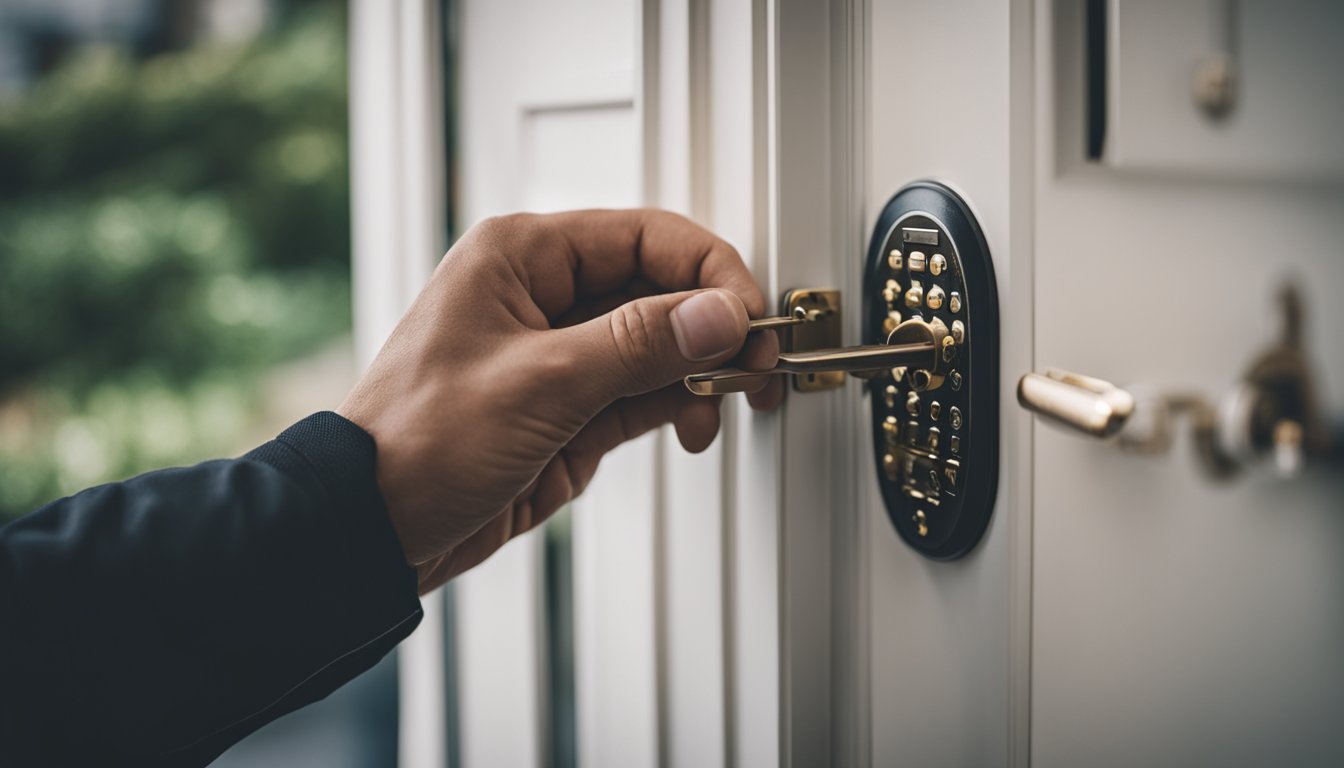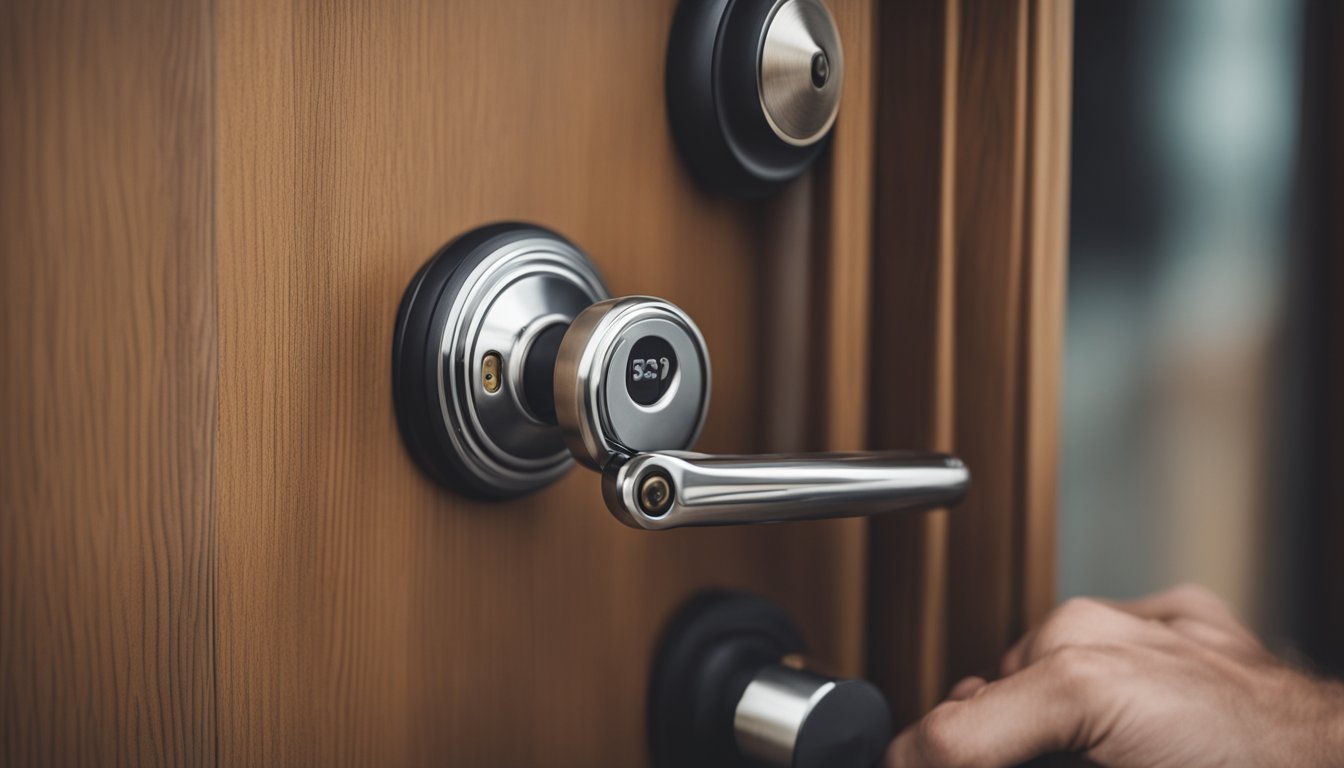Late updated: 27 Sep 2024 08:09
Written by: Elena Prescott
How To Prevent Lock Bumping: Effective Security Measures
Lock bumping is a significant concern for homeowners today. This method exploits the vulnerabilities in traditional pin tumbler locks, using specially crafted bump keys to easily gain access to locked doors. Understanding how to prevent lock bumping is crucial for enhancing your home's security and ensuring peace of mind.

By recognising the risks associated with lock bumping, we can take effective preventive measures. It’s essential not only to invest in high-quality locks but also to explore additional security options to safeguard our homes from potential threats. Anti-bump locks and secure locking mechanisms can significantly reduce the chances of a break-in.
Addressing these security challenges involves staying informed and proactive. Adopting best practices in residential security helps fortify our homes against intruders, making it a vital step towards achieving lasting security and peace of mind.
Key Takeaways
- Lock bumping poses a risk to traditional locks.
- High-security locks are effective in preventing bumping.
- Enhancing security measures provides peace of mind.
Understanding Lock Bumping and Its Prevention
Lock bumping is a technique that exploits vulnerabilities in traditional locks, particularly those with pin tumbler mechanisms. To protect our spaces, we must examine the workings of this method and identify effective prevention strategies using advanced locking systems.
The Mechanics of Lock Bumping
Lock bumping employs a specially crafted bump key. When inserted into a pin tumbler lock, a quick strike on the key causes the lock pins to jump, aligning at the shear line. This alignment allows the lock cylinder to turn, simulating the use of a correct key. The simplicity and effectiveness of this technique pose significant challenges to security, particularly for standard cylinder locks.
To enhance resistance, incorporating security pins can help. These pins disrupt the uniform movement needed for bumping. High-security locks like the Mul-T-Lock model further mitigate risks with advanced features. Understanding the vulnerabilities inherent in pin tumbler designs is the first step in countering such threats effectively.
Selecting Bump-Proof Solutions
For robust protection, selecting bump-proof or bump-resistant locks is essential. Deadbolts, particularly those designed with anti-bumping features, offer an added layer of security. Options such as Kwikset SmartKey provide innovative solutions that resist bumping through unique locking mechanisms, ensuring enhanced peace of mind.
Smart locks and electronic locks, exemplifying cutting-edge technology, can also be effective. These don't rely on traditional keyways, making them immune to bump keys. Moreover, keyless entry systems eliminate key-related vulnerabilities altogether. Investing in these advanced locks, coupled with comprehensive security measures, fortifies our defences against unauthorised access.
Enhancing Home Security Beyond Locks

Improving home security involves combining technology with practical measures. Smart lock systems provide keyless convenience, while reinforced doors and behavioural strategies play a crucial role in deterring unauthorised access.
Technological Reinforcements
Incorporating sophisticated technology into our security plan can provide significant protection. Smart lock systems with keyless entry eliminate common lock vulnerabilities, using codes or biometric data instead. They offer convenience and control via smartphones, allowing remote access management.
Security cameras are invaluable, recording and monitoring activity around the premises. Coupled with motion sensors, they alert us to unexpected movement. These systems act as both deterrence and evidence collection.
Investing in a comprehensive home security system with integrated alarms ensures immediate alerts during unauthorised access attempts. Advanced systems can automatically contact emergency services, offering us peace of mind.
Physical and Behavioural Measures
Strengthening physical barriers is key. Reinforcing door frames with metal plates or upgrading to solid-core doors can thwart many break-in attempts. A professional locksmith can provide door reinforcement and assess additional vulnerabilities.
Employing a guard dog can be an effective deterrent to unauthorised entry. Dogs not only guard the property but also create an immediate impression of vigilance.
Encouraging families to develop strong security habits is vital. Locking doors, keeping keys secure to prevent key duplication, and being mindful of unknown visitors are simple yet effective precautions. Collective engagement in personal safety practices further secures our home environment.
Frequently Asked Questions

Preventing lock bumping involves multiple strategies, including both upgrading locks and assessing their features rigorously. Certain brands provide enhanced bump protection, while particular lock types and designs might inherently reduce vulnerability.
What methods can enhance a lock's resistance to bumping?
Quality locks can be reinforced with security features such as high-security pins. Electronic and smart locks, equipped with digital authentication, are less susceptible to traditional bumping techniques. Installing additional security systems like deadbolts complements these upgrades.
Which lock brands offer bump-proof solutions for home security?
Some manufacturers specialise in producing bump-resistant locks. Companies like Medeco and Mul-T-Lock are known for their high-security locks. These brands typically employ sophisticated keyways and pin tumblers, which enhance resistance to bumping.
Can lock picking prevention techniques effectively mitigate the risk of bumping?
While lock picking differs from bumping, protective methods like keyway complexity can help against both. Security pins, designed to thwart picking, also add a layer of complexity that can deter bumping attacks.
What features should be considered when choosing anti-bump locks for residential use?
Look for locks with complex keyways, high-security pins, and additional layers of security, such as anti-pick or anti-drill features. Choose models certified with Security Standards, ensuring they meet specific anti-bumping criteria.
Are there specific types of locks that are known to be immune to bump key intrusion?
Some lock types, like dimple locks and tubular locks, are more resistant to bumping due to their unique designs. Keyless entry systems, especially those relying on biometrics or codes, bypass traditional vulnerabilities entirely.
How does the complexity of a lock's pin tumbler system affect its susceptibility to bumping?
Locks with more pins and varying pin lengths are more challenging to bump successfully. High-security pin configurations, like mushroom or spool pins, create additional challenges, thus reducing susceptibility to bump attacks.
